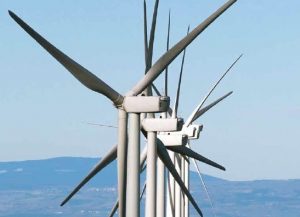The renewable energy industry is at a tipping point as the developed markets start to close the door on generous subsidy programs and emerging markets develop cost strategies to compete with fossil fuels according to Ernst & Young’s latest quarterly global renewable energy country attractiveness indices report.
Gil Forer, Ernst & Young’s Global Cleantech Leader, comments: “Current global macro-economic drivers are reinforcing the role of emerging markets in the future global energy mix. As renewable energy technologies become more cost-competitive, the importance of government subsidies is set to decrease to create a sustainable growth platform for both developed and emerging markets, as well as manufacturers.”
The indices provide scores in 40 countries for national renewable energy markets, renewable energy infrastructures and their suitability for individual technologies. During Q3 2012, China remained at the top of the All Renewables Index (ARI), but dropped a point as its solar sector continued the consolidation process in an effort to boost domestic installation and rationalize government support, which could slow growth in the more immediate term. In recent months, China has also seen a large outflow of Chinese investment in favor of markets such as Africa and South America.
The quarter also saw the United States drop 1.5 points in the ARI, resulting in Germany moving up into second place ahead of the U.S. While the German government has recently increased the country’s renewable energy target for electricity to 40 percent by 2020 and is proactively implementing policy measures to create sustainable growth, the downgraded score reflects the more immediate changes around possible subsidy caps for solar, wind, and biomass.
Within the U.S., the uncertainty about long term energy policy combined with concerns over the extension of key renewable energy incentives and the availability of low-priced natural gas are likely to continue slowing the growth in the sector in the short to medium term, particularly in the wind sector.
However when looking towards the long-term, Forer comments: “Now that the U.S. elections are behind us, we can likely expect new long-term momentum behind cleantech related regulations, such as EPA greenhouse gas regulations as well as Department of Energy and Department of Defense energy efficiency initiatives.”
Globally, total clean energy investment fell 5 percent in Q3, to $56.6 billion, with investor enthusiasm dampened by skepticism over policymakers’ renewable energy commitments and the continued decrease in solar and wind technology costs impacting on total investment values.
New investment levels have varied globally — with investment in Europe, Middle East and Africa rising 7 percent to $21 billion in Q3 — mainly driven by solar thermal and wind project financings in Morocco. However, in the same period, investment in the Americas and Asia-Pacific slipped by 25 percent and 3 percent, to $10.4 billion and $25.2 billion respectively.
Ben Warren, Ernst & Young Energy and Environmental Finance Leader comments: “Political and regulatory uncertainty, working in tandem with constrained capital markets, continue to put the brakes on investment and deal volumes. Looking forward, market restructuring and the emerging secondary infrastructure financing market are likely to provide the momentum for future investment.”
Having taken note of the lessons learnt across markets in Europe and the US, where high levels of subsidization have been the key driver of growth in the sector, governments in emerging markets are driving business models that work without direct subsidies or grants that could potentially compete head-on with conventional fossil fuel sources.
The latest indices include Saudi Arabia and United Arab Emirates (UAE) for the first time, reflecting the growing presence of the Middle East within the clean energy market, with the UAE ranked 35th in the index, two places above Saudi Arabia. The roll-out of solar initiatives places the UAE over Saudi Arabia in the Solar Index, while the reverse is true in the Wind Index based on natural resource.
When looking at the global outlook for the clean energy industry, Forer summarizes: “While the reliance on government subsidies is decreasing, it should not be forgotten that until “grid parity” is reached in more regions, financing will still depend on the timing and nature of individual countries’ incentives and support regimes, a commitment to invest in grid infrastructure and connectivity, and the ability of projects to seek multiple partnerships and investors.”
For more information, visit www.ey.com/CAI.



























